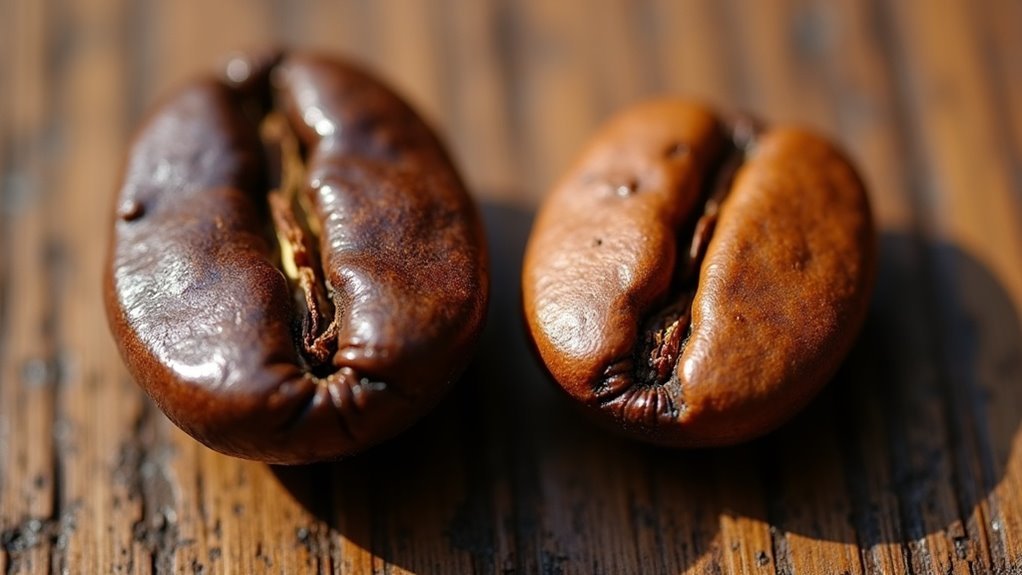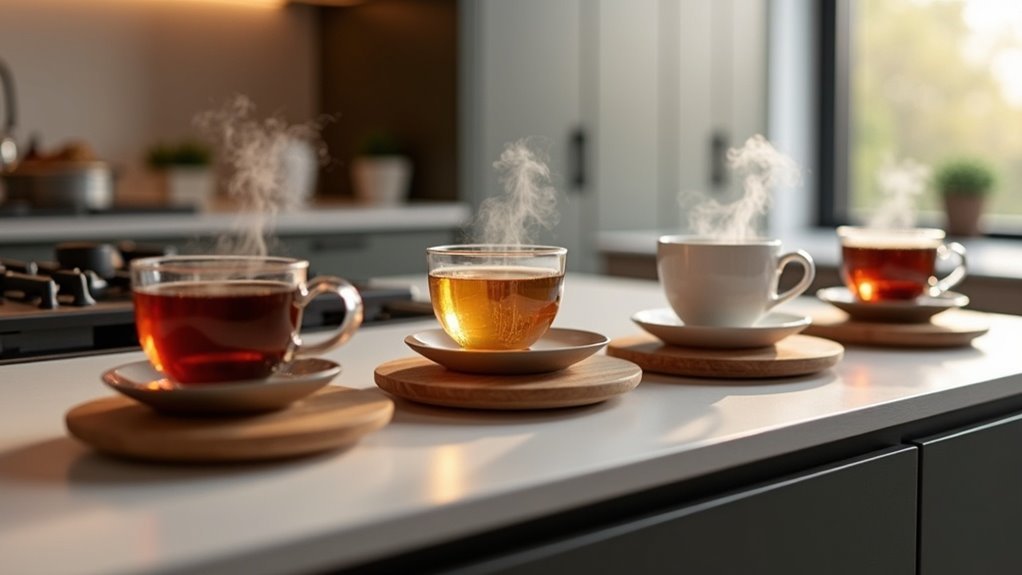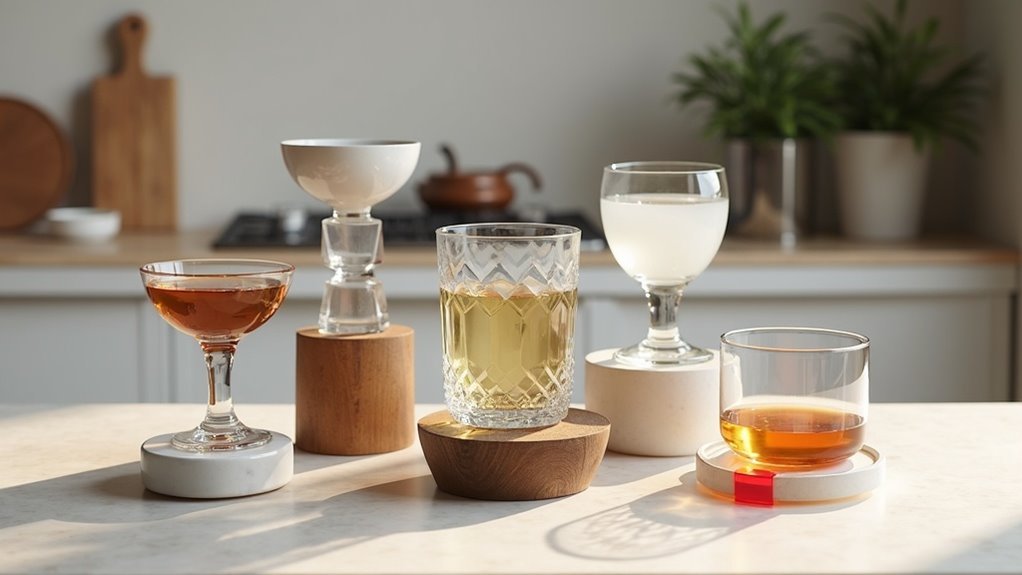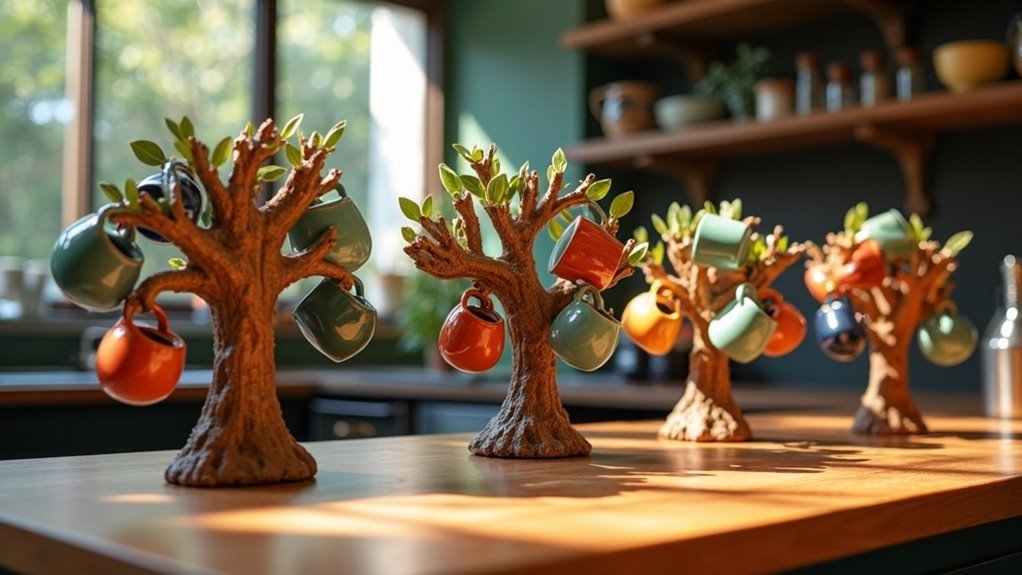Arabica and Liberica are two distinctive coffee varieties, each with its own unique characteristics that contribute to the world of coffee. Arabica thrives at high altitudes, delivering a smooth flavor profile enriched with sweet and fruity notes, making it a favorite among coffee enthusiasts. In contrast, Liberica flourishes in lowland tropical climates, boasting a bold, smoky taste that sets it apart from other varieties.
Arabica constitutes over 60% of global coffee production, making it widely accessible to consumers, while Liberica represents only about 1.5% of the market, which limits its availability. By understanding the differences between these two coffee varieties, you can enhance your coffee experience and explore the rich nuances each offers.
Key Takeaways
- Arabica coffee beans account for over 60% of global coffee production, while Liberica makes up only about 1.5%.
- Arabica features a smooth flavor profile with sweet, fruity, and floral notes, while Liberica offers a bold, smoky taste.
- Arabica thrives in high-altitude regions, whereas Liberica can adapt to lowland tropical climates and exhibits better disease resistance.
- Arabica is widely available in coffee shops, while Liberica is rare and often more expensive due to its limited growth regions.
- Brewing methods differ, with Arabica being best suited for pour-over and drip coffee, while Liberica benefits from higher brewing temperatures.
Overview of Arabica Coffee Beans
Arabica coffee beans, scientifically known as Coffea arabica, are the most sought-after variety in the coffee industry, comprising over 60% of the global coffee production.
These beans thrive in high-altitude regions, typically between 2,000 to 6,000 feet, where they benefit from consistent rainfall and plenty of shade. This specific growing environment contributes to their delicate characteristics, making Arabica beans more susceptible to diseases compared to other coffee varieties.
Arabica beans flourish at high altitudes, where consistent rainfall and shade enhance their delicate qualities but increase disease susceptibility.
They’re celebrated for their smooth flavor profile, often featuring delightful fruity and floral notes, and have a lower caffeine content ranging from 1.2% to 1.5%.
Key producers, including Brazil, Colombia, and Ethiopia, are instrumental in the cultivation of these premium-quality beans, contributing significantly to the coffee market.
Overview of Liberica Coffee Beans
Liberica coffee beans, which originate from Liberia, provide a distinctive experience in the world of coffee, accounting for only 1.5% of global production.
Their unique flavor profile features a blend of fruity, floral, and woody notes, resulting in a full-bodied and smoky taste that can be polarizing among coffee enthusiasts.
Additionally, these beans are characterized by their larger and irregular shape, as well as their resilience against diseases.
However, the challenges involved in cultivating Liberica can affect its market presence and popularity.
Unique Flavor Profile
Coffee enthusiasts often find themselves captivated by the unique flavor profile of Liberica coffee beans, known for their bold, smoky, and woody characteristics. This distinctive taste can be polarizing; it appeals to some while deterring others.
Here are key aspects of Liberica’s flavor:
- Fruity and Floral Notes: Subtle hints of fruitiness and floral aromas enhance its complexity.
- Full-bodied Taste: The richness provides a satisfying mouthfeel that coffee lovers appreciate.
- Lower Caffeine Levels: With about 25% less caffeine than Arabica, it offers a milder flavor experience.
- Specialty Blends: Frequently used to enrich blends, Liberica adds depth and complexity to overall flavor profiles.
Rarity and Cultivation Challenges
Despite its unique flavor profile and niche appeal, the rarity of Liberica coffee beans presents notable challenges for cultivation and market presence.
Accounting for only about 2% of global coffee production, Liberica is significantly less commonly grown than Arabica, which dominates with over 60%. The specific growing conditions required for Liberica, along with its susceptibility to environmental factors, complicate cultivation efforts.
Additionally, Liberica plants can reach heights of up to 20 feet, necessitating more space and resources. Harvesting is labor-intensive due to the larger, irregularly shaped beans.
Consequently, its distinct flavor profile can be divisive, making Liberica less appealing to mainstream coffee consumers and further limiting its market reach.
Flavor Profiles: Arabica vs. Liberica
When you compare the flavor profiles of Arabica and Liberica coffee, you’ll notice distinct characteristics that set them apart.
Arabica boasts a complex array of sweet, fruity, and floral notes, making it a favorite for many coffee enthusiasts.
In contrast, Liberica offers a bold, smoky, and woody taste that can be polarizing among coffee drinkers.
The differences in aroma and complexity not only reflect their unique growing conditions but also greatly influence your overall coffee experience.
Distinct Flavor Characteristics
The flavor profiles of Arabica and Liberica beans showcase the rich diversity within the coffee realm, each offering a unique sensory experience.
- Arabica coffee beans provide a smooth flavor with intricate notes of fruit, flowers, and sweetness.
- Liberica beans present bold characteristics, often described as having smoky and woody undertones.
- Arabica contains a caffeine content of 1.2% to 1.5%, contributing to its milder bitterness, whereas Liberica has about 25% less caffeine.
- Arabica flourishes in high-altitude regions with consistent rainfall, while Liberica thrives in tropical climates, reflecting the distinct growing conditions that influence their flavor profiles and market popularity.
Aroma and Complexity Differences
Exploring the aroma and complexity of Arabica and Liberica coffee reveals how these two varieties cater to different preferences among coffee enthusiasts.
Arabica coffee boasts a rich flavor profile with over 800 aromatic compounds, offering complex flavors of fruit, flowers, and citrus. Its pleasing aroma appeals to many, contributing to Arabica’s market dominance, comprising over 60% of global coffee production.
In contrast, Liberica presents a unique aroma—bold, smoky, and woody—often polarizing among drinkers. With about 25% less caffeine, its intense flavor mightn’t suit everyone, but its rarity adds to its allure, making it a distinctive choice for adventurous palates.
Whether you prefer the nuanced notes of Arabica or the bold characteristics of Liberica, both varieties offer a unique coffee experience.
Growing Conditions and Terroir
While both Arabica and Liberica coffee plants have their unique growing conditions and terroir, their requirements highlight significant differences that influence their cultivation and flavor profiles.
- Arabica plants thrive at high elevations (2,000 to 6,000 feet) with cooler temperatures (15°C to 24°C), resulting in a delicate and nuanced flavor.
- Liberica plants can adapt to various altitudes but prefer lowland tropical climates, producing a more robust and distinctive taste.
- The terroir for Arabica enhances its complex flavor profile, especially in renowned coffee-producing regions like Colombia and Ethiopia, where soil and climate conditions contribute to its high quality.
- Arabica is more prone to disease, which can pose challenges for growers, while Liberica boasts better disease resistance, making it easier to cultivate in certain environments and potentially more sustainable in the long run.
Caffeine Content: Arabica vs. Liberica
Caffeine content is a key factor in distinguishing Arabica from Liberica coffee, as each variety offers a distinct experience shaped by their chemical compositions.
Arabica coffee beans generally contain about 1.2% to 1.5% caffeine, which contributes to a smoother coffee experience with a sweeter flavor profile.
Arabica coffee beans, with 1.2% to 1.5% caffeine, offer a smoother, sweeter flavor experience.
On the other hand, Liberica coffee beans have about 25% less caffeine, often falling below the 1.2% mark. This lower caffeine content may deter some coffee enthusiasts who prefer stronger brews.
Both varieties showcase unique adaptations to their growing environments, and these differences contribute to the cultivation challenges and the relative rarity of Liberica in the market compared to its more popular counterpart, Arabica.
Popularity and Availability
How does the global coffee market reflect the preferences of consumers? The popularity of Arabica coffee beans, which account for over 60% of global coffee production, speaks volumes about consumer choices. In contrast, Liberica beans make up about 1.5% of the market, leading to their rarity and higher price.
Here’s how they differ:
- Availability: Arabica is widely available in most coffee shops and stores, while Liberica can be challenging to find.
- Flavor: Arabica’s smooth and mild flavor profile appeals to a broad audience, whereas Liberica’s distinct and bold taste often divides opinions among coffee lovers.
- Growing Conditions: Liberica requires specific environmental conditions for cultivation, which limits its growth in various regions.
- Harvesting Challenges: The complexities involved in harvesting Liberica further restrict its presence in the market, making it less accessible to consumers.
This illustrates how consumer preferences greatly influence the coffee landscape, highlighting the dominance of Arabica and the niche appeal of Liberica.
Brewing Methods for Arabica and Liberica
Brewing methods are essential for unlocking the unique flavors of both Arabica and Liberica coffee beans.
For Arabica beans, techniques such as pour-over and drip brewing bring out their light, sweet body and complex flavor profile. It’s best to brew them at temperatures between 195°F to 205°F for optimal extraction.
On the other hand, Liberica coffee offers a bold taste that thrives at higher brewing temperatures, making it ideal for strong preparations.
While the quality of Arabica can diminish with cold or creamy additions, Liberica’s robust character allows it to retain its distinct flavors even when sweetened, effectively balancing its fruity and woody notes.
Choose your brewing method wisely to enhance your coffee experience!








